To be able to use SoundMixer.computeSpectrum() with the audio of an RTMP stream, you should start by enabling the access to the audio raw data in the server side like this :
For Adobe / Flash Media Server ( AMS / FMS ) :
Application.xml :
<Application>
<!-- ... -->
<Client>
<Access>
<AudioSampleAccess enabled="true">/</AudioSampleAccess>
</Access>
</Client>
<!-- ... -->
</Application>
or using Main.asc :
application.onConnect = function( p_client, p_autoSenseBW )
{
// ...
p_client.audioSampleAccess = "/";
// ...
}
For Wowza Media Server :
Application.xml :
<Application>
<!-- ... -->
<Client>
<Access>
<StreamAudioSampleAccess>*</StreamAudioSampleAccess>
</Access>
</Client>
<!-- ... -->
</Application>
For RED5 :
red5-web.xml :
<bean id="rtmpSampleAccess" class="org.red5.server.stream.RtmpSampleAccess">
<property name="audioAllowed" value="true"/>
</bean>
Then you have just to play your stream as you did usually and for the graphic representation of the sound wave data, you can use, for example, the example code available in the documentation page of SoundMixer.computeSpectrum() :
var server:String = 'rtmp://127.0.0.1/vod', stream:String = 'sample',
nc:NetConnection, ns:NetStream, vd:Video,
spectrum:Sprite, last_status:String = '';
nc = new NetConnection();
nc.connect(server);
nc.addEventListener(NetStatusEvent.NET_STATUS, on_NetStatus);
nc.addEventListener(AsyncErrorEvent.ASYNC_ERROR, function(e:AsyncErrorEvent): void {});
function on_NetStatus(e:NetStatusEvent):void
{
var code:String = e.info.code;
switch (code)
{
case 'NetConnection.Connect.Success' :
ns = new NetStream(nc);
ns.bufferTime = 3;
ns.addEventListener(NetStatusEvent.NET_STATUS, on_NetStatus);
ns.addEventListener(AsyncErrorEvent.ASYNC_ERROR, function(e:AsyncErrorEvent): void {});
vd = new Video(320,180);
vd.x = vd.y = 0;
vd.attachNetStream(ns);
addChild(vd);
spectrum = new Sprite();
spectrum.x = spectrum.y = 0;
addChild(spectrum);
ns.play(stream);
break;
case 'NetStream.Play.Start' :
addEventListener(Event.ENTER_FRAME, on_EnterFrame);
break;
case 'NetStream.Buffer.Flush':
if(last_status == 'NetStream.Play.Stop'){
removeEventListener(Event.ENTER_FRAME, on_EnterFrame);
}
break;
}
last_status = code;
}
function on_EnterFrame(event:Event):void
{
var bytes:ByteArray = new ByteArray();
const PLOT_HEIGHT:int = stage.stageHeight / 2;
const CHANNEL_LENGTH:int = 256;
SoundMixer.computeSpectrum(bytes, false, 0);
var g:Graphics = spectrum.graphics;
g.clear();
g.lineStyle(0, 0xffffff);
g.beginFill(0x00ff00);
g.moveTo(0, PLOT_HEIGHT);
var n:Number = 0;
for (var i:int = 0; i < CHANNEL_LENGTH; i++)
{
n = (bytes.readFloat() * PLOT_HEIGHT);
g.lineTo(i * 2, PLOT_HEIGHT - n);
}
g.lineTo(CHANNEL_LENGTH * 2, PLOT_HEIGHT);
g.endFill();
g.lineStyle(0, 0xCC0066);
g.beginFill(0xCC0066, 0.5);
g.moveTo(CHANNEL_LENGTH * 2, PLOT_HEIGHT);
for (i = CHANNEL_LENGTH; i > 0; i--)
{
n = (bytes.readFloat() * PLOT_HEIGHT);
g.lineTo(i * 2, PLOT_HEIGHT - n);
}
g.lineTo(0, PLOT_HEIGHT);
g.endFill();
}
sample here is an FLV video file provided with AMS / FMS. You can of course use any kind of supported video or audio files ( MP4, MP3, ... ).
The above code gives you something like this :

Hope that can help.

